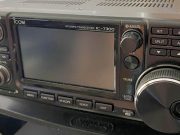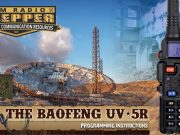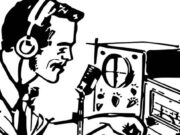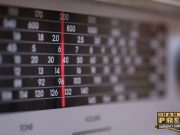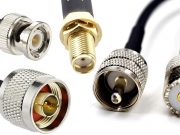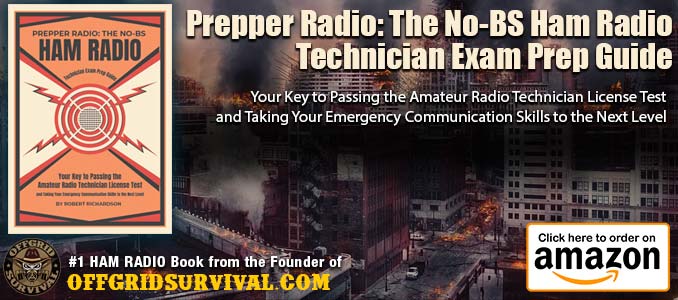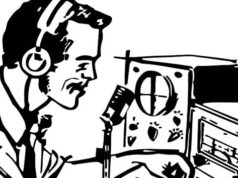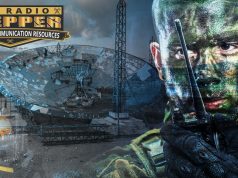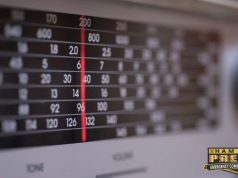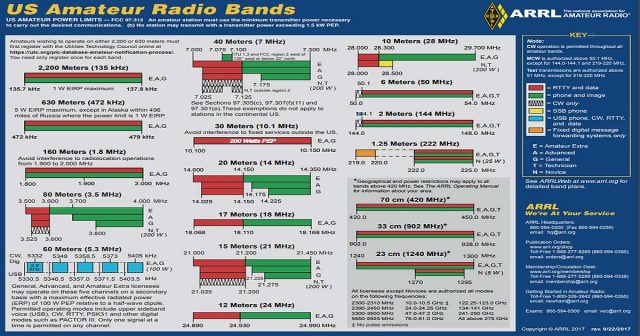
When it comes to go-to radio frequencies to monitor during an emergency, some of the most productive and useful frequencies you are going to find fall within the Ham Radio bands.
Ham Radio bands span the radio spectrum; each band is going to provide a different set of challenges and opportunities for those looking to either transmit or receive vital survival information.
A look at the Amateur Radio (HAM) Bands:
LF Bands: Low Frequency
LF is the International Telecommunication Union (ITU) designation for radio frequencies that fall between 30–300 kHz.
2200 Meters
When it
comes to Ham Radio, the only official LF band is 2200 meters.
Frequency Range: 135.7-137.8 kHz: CW, Phone, Image, RTTY/Data
License Class: General, Advanced, Amateur Extra licensees
MF Bands: Medium Frequency
630 Meters
The 630 Meter frequencies are just below commercial AM broadcast
bands.
Frequency Range: 472–479 kH: CW, Phone, Image, RTTY/Data
License Class: General, Advanced, Amateur Extra licensees
160 Meters
The 160
Meter Band frequencies are just above commercial AM broadcast bands.
Frequency Range: 1.800-2.000 MHz: CW, Phone, Image, RTTY/Data
License Class: General, Advanced, Amateur Extra licensees
HF Bands: High Frequency
The HF bands are where you are going to find most of your DX or long-distance stations. These frequencies span from 3.5 MH (80 meters) to 29.7 MHz (10 meters).
80 Meters
80 Meters consists of the frequencies from 3.5–4.0 MHz (3500–4000 kHz). The band is best worked at night during the winter.
License Class: Novice and Technician classes
Frequency Range: 3.525-3.600 MHz: CW Only
License Class: General class
Frequency Range: 525-3.600 MHz: CW, RTTY/Data – 3.800-4.000 MHz: CW, Phone,
License Class: Advanced class
Frequency Range: 3.525-3.600 MHz: CW, RTTY/Data – 3.700-4.000 MHz: CW, Phone,
License Class: Amateur Extra
Frequency Range: 3.500-3.600 MHz: CW, RTTY/Data – 3.600-4.000 MHz: CW, Phone, Image
60 Meters: Five Specific Channels
The FCC has granted hams secondary access on USB only to five discrete 2.8-kHz-wide channels. Amateurs can not cause inference to and must accept interference from the Primary Government users. The NTIA says that hams planning to operate on 60 meters “must assure that their signal is transmitted on the channel center frequency.” This means that amateurs should set their carrier frequency 1.5 kHz lower than the channel center frequency.
General, Advanced and Amateur Extra classes:
| Channel Center | Amateur Tuning Frequency |
| 5332 kHz | 5330.5 kHz |
| 5348 kHz | 5346.5 kHz |
| 5358.5 kHz | 5357.0 kHz |
| 5373 kHz | 5371.5 kHz |
| 5405 kHz (common US/UK) | 5403.5 kHz |
Effective March 5, 2012, amateurs are permitted to use CW and phone, as well as digital modes that comply with emission designator 60H0J2B, which includes PSK31 as well as any RTTY signal with a bandwidth of less than 60 Hz. They may also use modes that comply with emission designator 2K80J2D, which includes any digital mode with a bandwidth of 2.8 kHz or less whose technical characteristics have been documented publicly, per Part 97.309(4) of the FCC Rules. Such modes would include PACTOR I, II or III, 300-baud packet, MFSK16, MT63, Contestia, Olivia, DominoEX and others. with a maximum effective radiated power (ERP) of 100 W. Radiated power must not exceed the equivalent of 100 W PEP transmitter output power into an antenna with a gain of 0 dBd.
Band Notes: Primarily used in United States, United Kingdom, Ireland, Norway, Denmark, and Iceland.
40 Meters
40 Meters is probably one of the most reliable all-season DX bands.
License Class: Novice and Technician classes
Frequency Range: 7.025-7.125 MHz : CW only
License Class: General
Frequency Range: 7.025-7.125 MHz : CW, RTTY/Data – 7.175-7.300 MHz:: CW, Phone,
License Class: Advanced
Frequency Range: 7.025-7.125 MHz : CW, RTTY/Data – 7.125-7.300 MHz:: CW, Phone,
License Class: Amateur Extra
Frequency Range: 7.000-7.125 MHz : CW, RTTY/Data – 7.125-7.300 MHz:: CW, Phone, Image
Band Notes: Phone and Image modes are permitted between 7.075 and 7.100 MHz for FCC licensed stations in ITU Regions 1 and 3 and by FCC licensed stations in ITU Region 2 West of 130 degrees West longitude or South of 20 degrees North latitude. See Sections 97.305(c) and 97.307(f)(11). Novice and Technician licensees outside ITU Region 2 may use CW only between 7.025 and 7.075 MHz and between 7.100 and 7.125 MHz. 7.200 to 7.300 MHz is not available outside ITU Region 2. See Section 97.301(e). These exemptions do not apply to stations in the continental US.
30 Meters
30 Meters is a narrow digital band, which is shared with non-hams that runs from 10.1–10.15 MHz and has a maximum power of 200 watts PEP.
License Class: General, Advanced, Amateur Extra classes:
Frequency Range: 10.100-10.150 MHz: CW, RTTY/Data
20 Meters
20 meters is one of the most popular ham bands, especially with DX stations. The band spans from 14.0–14.35 MHz and is most active during the day.
License Class: General class
Range: 14.025 -14.150 MHz CW, RTTY/Data – 14.225 -14.350 MHz: CW, Phone, Image
License Class: Advanced class
Range: 14.025 -14.150 MHz CW, RTTY/Data – 14.175 -14.350 MHz: CW, Phone, Image
License Class: Extra class
Range: 14.000 – 14.150 MHz CW, RTTY/Data – 14.150 -14.350 MHz: CW, Phone, Image
17 Meters
License Class: General, Advanced, Amateur Extra classes
Frequency Range: 18.068-18.110 MHz: CW, RTTY/Data – 18.110-18.168 MHz: CW, Phone, Image
15 Meters
License Class: Novice and Technician classes
Frequency Range: 21.025-21.200 MHz: CW Only
License Class: General class
Frequency Range: 21.025-21.200 MHz: CW, RTTY/Data – 21.275-21.450 MHz: CW, Phone, Image
License Class: Advanced class
Frequency Range: 21.025-21.200 MHz: CW, RTTY/Data – 21.225-21.450 MHz: CW, Phone, Image
License Class: Extra class
Frequency Range: 21.000-21.200 MHz: CW, RTTY/Data – 21.200-21.450 MHz: CW, Phone, Image
12 Meters
License Class: General, Advanced, Amateur Extra classes
Frequency Range: 24.890-24.930 MHz: CW, RTTY/Data – 24.930-24.990 MHz: CW, Phone, Image
10 Meters
Band Notes: Great activity during solar maximum; otherwise not the best band for DX
License Class: Novice and Technician classes
Frequency Range: 28.000-28.300 MHz: CW, RTTY/Data–Maximum power 200 watts PEP – 28.300-28.500 MHz: CW, Phone–Maximum power 200 watts PEP
License Class: General, Advanced, Amateur Extra classes
Frequency Range: 28.000-28.300 MHz: CW, RTTY/Data – 28.300-29.700 MHz: CW, Phone, Image
VHF/UHF Bands: Very high frequencies and ultra-high frequencies
6 Meters
License Class: All Amateurs except Novices
Frequency Range: 50.0-50.1 MHz: CW Only – 50.1-54.0 MHz: CW, Phone, Image, MCW, RTTY/Data
2 Meters
License Class: All Amateurs except Novices
Frequency Range: 144.0-144.1 MHz: CW Only – 144.1-148.0 MHz: CW, Phone, Image, MCW, RTTY/Data
1.25 Meters
The FCC has allocated 219-220 MHz to amateur use on a secondary basis. This allocation is only for fixed digital message forwarding systems operated by all licensees except Novices. Amateur operations must not cause interference to, and must accept interference from, primary services in this and adjacent bands. Amateur stations are limited to 50 W PEP output and 100 kHz bandwidth. Automated Maritime Telecommunications Systems (AMTS) stations are the primary occupants in this band. Amateur stations within 398 miles of an AMTS station must notify the station in writing at least 30 days prior to beginning operations. Amateur stations within 50 miles of an AMTS station must get permission in writing from the AMTS station before beginning operations. The FCC requires that amateur operators provide written notification including the station’s geographic location to the ARRL for inclusion in a database at least 30 days before beginning operations. See Section 97.303(e) of the FCC Rules.
Novice (Novices are limited to 25 watts PEP output), Technician, General, Advanced, Amateur Extra classes:
222.00-225.00 MHz: CW, Phone, Image, MCW, RTTY/Data
70 Centimeters
License Class: All Amateurs except Novices
Frequency Range: 420.0-450.0 MHz: CW, Phone, Image, MCW, RTTY/Data
33 Centimeters
License Class: All Amateurs except Novices
Frequency Range: 902.0-928.0 MHz: CW, Phone, Image, MCW, RTTY/Data
23 Centimeters
License Class: Novice
Frequency Range: 1270-1295 MHz: CW, phone, Image, MCW, RTTY/Data (maximum power, 5 watts PEP)
License Class: All Amateurs except Novices
Frequency Range: 1240-1300 MHz: CW, Phone, Image, MCW, RTTY/Data
Higher Frequencies:
All modes and licensees (except Novices) are authorized on the following bands [FCC Rules, Part 97.301(a)]:
2300-2310
MHz
2390-2450 MHz
3300-3500 MHz
5650-5925 MHz
10.0-10.5 GHz
24.0-24.25 GHz
47.0-47.2 GHz
76.0-81.0 GHz*
122.25 -123.00 GHz
134-141 GHz
241-250 GHz
All above 300 GHz
* Amateur operation at 76-77 GHz has been suspended till the FCC can determine that interference will not be caused to vehicle radar systems
To operate on 2200 or 630 meters, amateurs must first register with the Utilities Technology Council online at https://utc.org/plc-database-amateur-notification-process/.

 <
<

